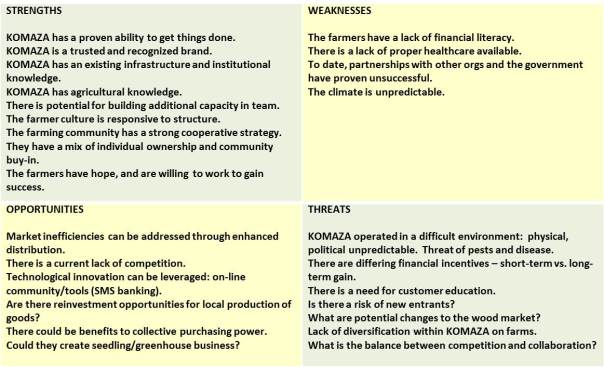Contributed by Kristi Ringen, WG ’01
 On Friday, April 13, 2012 the Wharton School and the University of Pennsylvania hosted the inaugural Lipman Family Prize Un-Conference. This event represented the beginning of Penn’s partnership with the three 2012 Lipman Family Prize finalists: iDE ,the 2012 Prize winner recognized for its market-based approach to improving sanitation in developing countries; KOMAZA, a social enterprise that works with rural dryland families in Kenya to grow trees as a cash crop; and MedShare, a US based organization that collects medical surplus supplies and equipment and redistributes them for use in developing countries.
On Friday, April 13, 2012 the Wharton School and the University of Pennsylvania hosted the inaugural Lipman Family Prize Un-Conference. This event represented the beginning of Penn’s partnership with the three 2012 Lipman Family Prize finalists: iDE ,the 2012 Prize winner recognized for its market-based approach to improving sanitation in developing countries; KOMAZA, a social enterprise that works with rural dryland families in Kenya to grow trees as a cash crop; and MedShare, a US based organization that collects medical surplus supplies and equipment and redistributes them for use in developing countries.
Each organization posed a specific challenge that they currently face to the Un-Conference attendees and the majority of the day was spent in small group discussions further exploring these issues. In addition to brainstorming potential solutions, each small group also explored a different framework to use when approaching social and organizational challenges of this magnitude.
The following post is the second in a set of three and provides more detail regarding KOMAZA’s social challenge and the techniques used to approach the problem in a small group.
KOMAZA’s Social Challenge:
KOMAZA supports subsistence farmers in growing, maintaining, and cultivating eucalyptus trees as a cash crop. To enable its work KOMAZA is building an infrastructure that includes several layers of field workers, field managers and a director of Operations. For the sake of this exercise, let’s consider this infrastructure as a stand-alone platform. Currently, it’s used for everything from cultivating eucalyptus seedlings to harvesting and selling mature trees.
KOMAZA is considering “diversifying horizontally” (i.e. providing other services using the same infrastructure). If they do, one question is when they should diversify – before or after proportinately increasing their current eucalyptus farming program. A second issue is how they pick which services to provide. Lastly, they need to determine what’s operationally viable?
The Small-Group Approach:
The group discussion focused on performing a SWOT exercise for KOMAZA (identifying its Strengths, Weaknesses, Opportunities, and Threats) followed by a Stakeholder Analysis.
- For the SWOT analysis, the larger group was divided into four groups and each was assigned a category.
- For the stakeholder analysis, participants were asked to identify with a specific stakeholder group and then come up with questions and concerns that these groups might have, knowing that KOMAZA was considering a horizontal diversification strategy. The questions and concerns were then organized according to specific themes.
The outcomes of these exercises are summarized below:
SWOT ANALYSIS
*This is a sample of the discussion including the categories of farmers and KOMAZA field workers. Other stakeholders discussed included potential or current partners, Komaza Leadership/headquarter staff, final purchasers of KOMAZA products and investors/funders.
Potential Avenues to Explore:
At the conclusion of these exercises, the group discussed the following ideas for further investigation:
- Using KOMAZA to leverage economies of scale in order to get farmers the goods they need from nearby cities at the best prices possible.
- Continuing to explore partnerships – perhaps with other non-profits in the area – with the ability to offer services to the farmers that KOMAZA cannot.
Additional Resources:
If you are interested in learning more about KOMAZA, visit their website or read a summary of their organization and the social challenges addressed at the Lipman Family Prize website.
Share Your Thoughts: Do you have additional thoughts on the Strengths, Weaknesses, Opportunities and Threats to KOMAZA? Are there additional stakeholder groups or concerns that should be considered? Has this discussion given you an idea for KOMAZA to consider? If so, we encourage you to share it here.


[…] According to the Wharton Leadership Blog, KOMAZA is working to create the infrastructure to support their organization. This means they must build the support for field workers and managers and high level support staff. These staff must also have the infrastructure to cultivate seeds, harvest trees, and sell the product. When KOMAZA refers to horizontal diversification for their business, they are talking about infrastructure to provide other services. […]